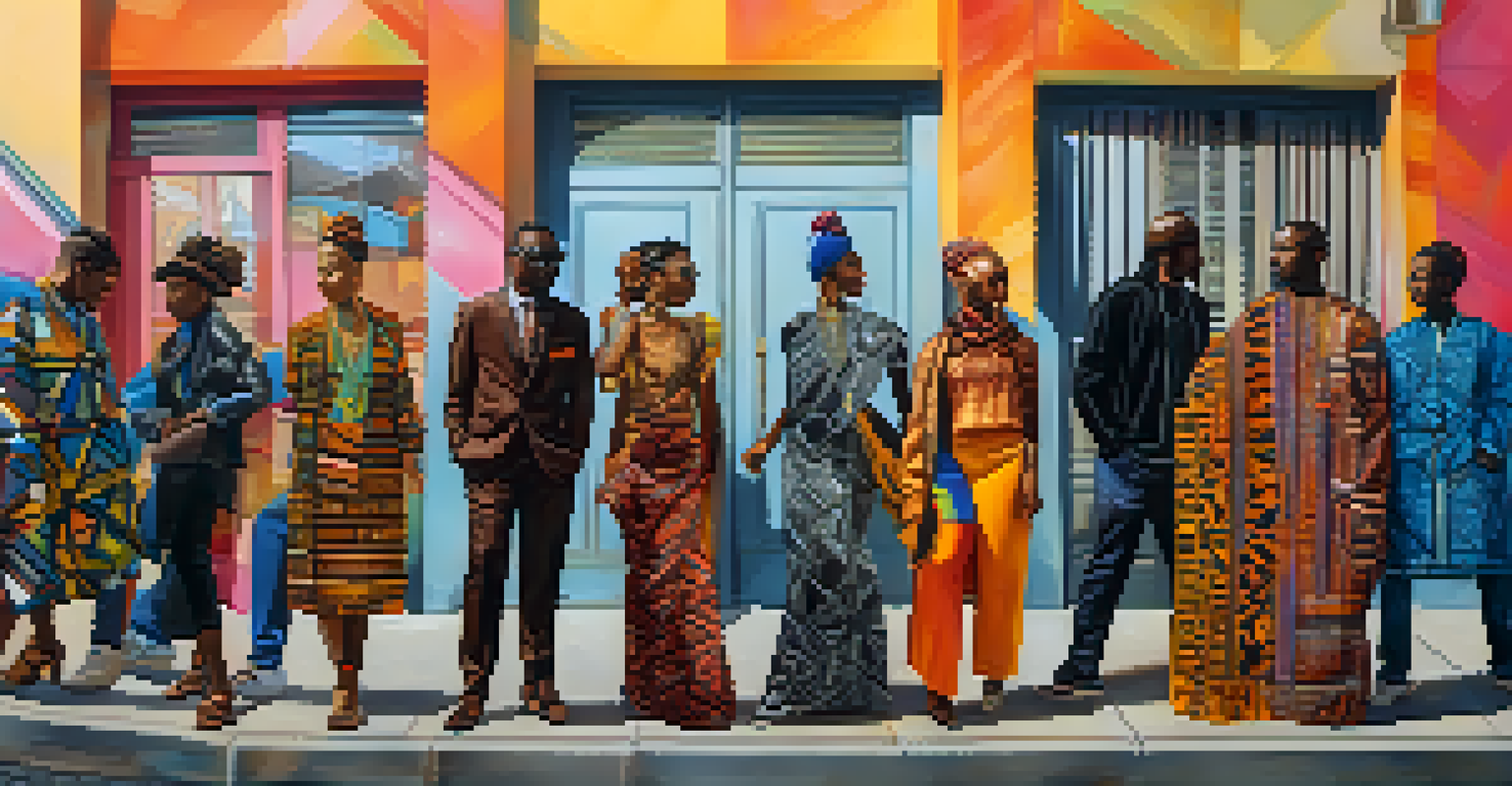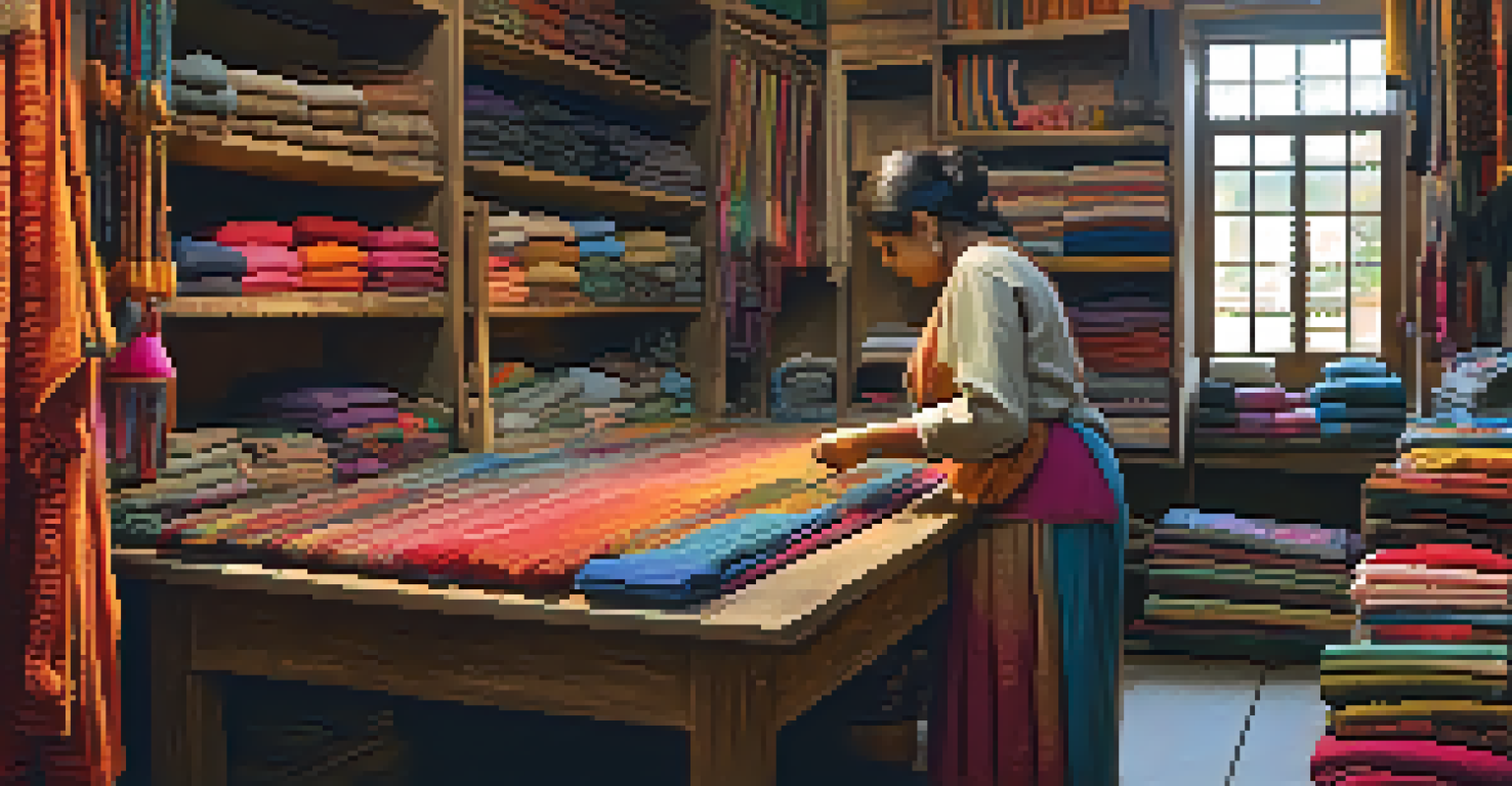The Evolution of Traditional Clothing in Modern Fashion Trends

Understanding Traditional Clothing and Its Significance
Traditional clothing refers to the attire that holds cultural significance, often passed down through generations. Each piece of clothing tells a story and reflects the values, beliefs, and lifestyles of a particular community or region. For example, the kimono in Japan symbolizes elegance and tradition, while the sari in India represents grace and heritage.
Fashion is the armor to survive the reality of everyday life.
These garments are not just about aesthetics; they embody history and identity. Wearing traditional clothing can foster a sense of belonging and pride within a culture. In many societies, these clothes are worn during important ceremonies and festivals, bridging the gap between the past and present.
However, as globalization takes hold, the lines between traditional and modern fashion have begun to blur. This evolution raises questions about how these garments adapt to contemporary tastes while retaining their original significance.
The Impact of Globalization on Fashion Trends
Globalization has made the world more interconnected, allowing cultures to share their traditions and styles. As a result, many designers draw inspiration from traditional clothing, incorporating unique patterns, fabrics, and techniques into their modern collections. This cross-cultural exchange often leads to innovative and exciting fashion trends.

For instance, the incorporation of African prints into streetwear has created a vibrant fusion that appeals to a diverse audience. Similarly, the use of indigenous patterns in high fashion has sparked interest, making traditional designs a staple on runways worldwide.
Traditional Clothing's Cultural Role
Traditional clothing embodies cultural values and identity, often serving as a bridge between heritage and modernity.
While this blending of styles can celebrate diversity, it also raises concerns about cultural appropriation. It’s crucial for both designers and consumers to approach these influences with respect and understanding, ensuring that traditional elements are honored rather than exploited.
Revival of Heritage: The Rise of Ethnic Fashion
In recent years, there has been a resurgence of interest in ethnic fashion, where traditional garments are reimagined for modern wear. This revival often highlights artisanal craftsmanship and sustainable practices, appealing to eco-conscious consumers. Brands are now embracing handmade textiles and traditional techniques, providing a platform for artisans and preserving cultural heritage.
Clothes mean nothing until someone lives in them.
Take the example of the ‘slow fashion’ movement, which encourages thoughtful consumption and supports local economies. Many consumers are now seeking out brands that prioritize ethical production, leading to a renewed appreciation for the intricacies of traditional clothing.
This trend not only benefits artisans but also allows wearers to connect with their roots. Whether it’s a contemporary twist on a classic tunic or a modernized version of a traditional dress, ethnic fashion empowers individuals to express their identity.
Sustainability: Traditional Clothing Meets Modern Values
Sustainability has become a key focus in today’s fashion industry, and traditional clothing often aligns with these values. Many traditional garments are made using natural fibers and techniques that have minimal environmental impact. This approach contrasts sharply with fast fashion, which typically relies on synthetic materials and mass production.
For instance, handwoven textiles from various cultures not only showcase exceptional craftsmanship but also promote sustainable practices. By choosing to wear traditional clothing, consumers can make a conscious choice to support environmentally friendly fashion.
Globalization and Fashion Fusion
Globalization encourages a blend of traditional and modern styles, fostering innovative fashion trends while raising concerns about cultural appropriation.
Moreover, as awareness of climate change grows, the demand for sustainable fashion continues to rise. This shift encourages designers to explore and incorporate traditional methods that prioritize both style and sustainability.
Fashion Icons: Influencing Traditional Styles
Fashion icons play a significant role in shaping trends, and many of them have embraced traditional clothing in their wardrobes. Celebrities and influencers often showcase these garments on social media, bringing them into the mainstream. This visibility helps to normalize and celebrate traditional attire, making it more accessible to a wider audience.
For example, figures like Priyanka Chopra and Lupita Nyong’o have been seen wearing traditional dresses that blend cultural significance with modern flair. Their choices inspire fans to explore and appreciate their heritage, often leading to a resurgence of interest in traditional wear.
As these fashion icons continue to incorporate traditional elements into their looks, they challenge the notion of what modern fashion can be, encouraging a more inclusive and diverse fashion landscape.
Modern Interpretations: Blending Tradition with Innovation
Today's designers are creatively merging traditional clothing with contemporary styles, resulting in unique fashion statements. By reinterpreting classic silhouettes and patterns, they create garments that resonate with both younger and older generations. This innovative approach not only preserves cultural heritage but also keeps it relevant in modern society.
Take, for example, the use of traditional embroidery techniques on contemporary jackets or the incorporation of ethnic prints into casual wear. These adaptations allow individuals to express their identity while embracing current fashion trends.
Sustainability in Ethnic Fashion
The rise of ethnic fashion highlights sustainable practices and ethical production, allowing consumers to connect with their roots while supporting artisans.
Such modern interpretations not only appeal to a global audience but also encourage cross-cultural appreciation. This blending of old and new creates a vibrant tapestry of fashion, showcasing the beauty of diversity.
Challenges of Preserving Traditional Clothing in Modern Fashion
Despite the positive trends, challenges remain in preserving traditional clothing within the realm of modern fashion. One major concern is the risk of losing the authenticity of these garments as they are commercialized and mass-produced. This can lead to a dilution of the cultural significance that traditional clothing holds.
Additionally, the fast-paced nature of the fashion industry often prioritizes trends over heritage. As styles quickly change, there’s a danger that traditional garments may be overlooked or forgotten in favor of the latest trends.

To combat this, it's essential for both consumers and brands to prioritize and support ethical practices that honor traditional artisans. By valuing the stories behind each piece and investing in slow fashion, we can ensure that these timeless garments continue to thrive.